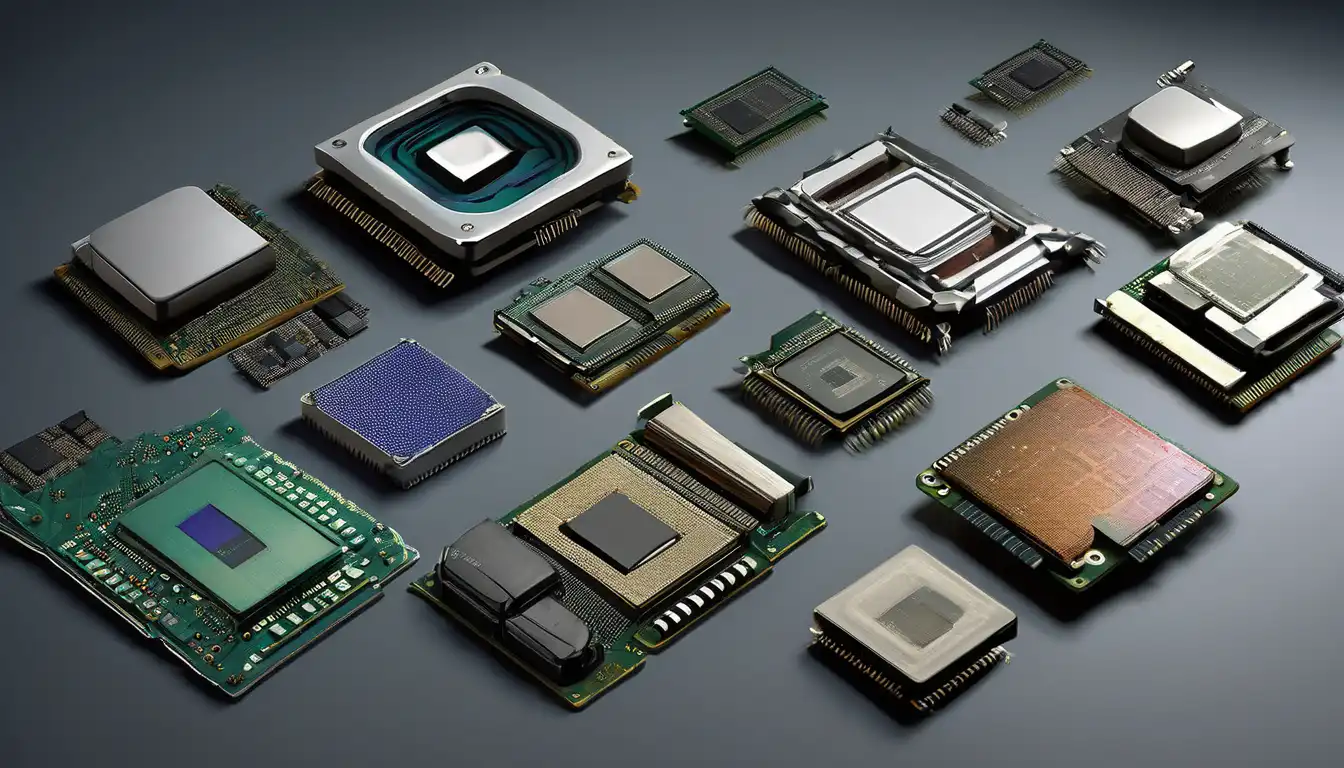The Dawn of Computing: Early Processor Beginnings
The evolution of computer processors represents one of the most remarkable technological journeys in human history. Beginning with primitive vacuum tube systems in the 1940s, processors have undergone exponential growth in both capability and efficiency. The first electronic computers, such as ENIAC, utilized thousands of vacuum tubes that consumed enormous amounts of power while offering minimal processing capabilities by today's standards. These early systems laid the foundation for what would become the digital revolution.
The Transistor Revolution: 1950s-1960s
The invention of the transistor in 1947 marked a pivotal moment in processor evolution. By the 1950s, transistors began replacing vacuum tubes, offering significant advantages in size, reliability, and power consumption. IBM's introduction of the first commercial transistorized computer in 1959 demonstrated the practical applications of this new technology. The transition to transistors enabled computers to become more accessible and reliable, setting the stage for further innovation in computer architecture.
Key Developments During This Era:
- Replacement of vacuum tubes with semiconductor transistors
- Development of early integrated circuits
- Introduction of mainframe computers for business applications
- Emergence of assembly language programming
The Integrated Circuit Era: 1960s-1970s
The 1960s witnessed another breakthrough with the development of integrated circuits (ICs). Jack Kilby and Robert Noyce independently developed methods to combine multiple transistors on a single silicon chip. This innovation led to the creation of the first microprocessors. Intel's 4004 processor, released in 1971, contained 2,300 transistors and operated at 740 kHz – a revolutionary achievement at the time. This period saw the birth of the modern microprocessor architecture that continues to influence design principles today.
The Personal Computer Revolution: 1980s-1990s
The 1980s marked the beginning of the personal computer era, driven by increasingly powerful and affordable processors. Intel's x86 architecture became the industry standard, with processors like the 8086 and 80286 paving the way for IBM-compatible PCs. The 1990s introduced groundbreaking innovations including superscalar architecture, pipelining, and the Pentium processor series. During this period, processor clock speeds increased from mere megahertz to hundreds of megahertz, while transistor counts grew exponentially following Moore's Law predictions.
Major Processor Families Developed:
- Intel x86 architecture (8086, 80286, 80386)
- Motorola 68000 series for early Macintosh computers
- AMD's competitive x86-compatible processors
- RISC architectures from companies like MIPS and ARM
The Multi-Core Revolution: 2000s-Present
As physical limitations began challenging single-core performance improvements, the industry shifted toward multi-core processors in the early 2000s. Intel and AMD introduced dual-core processors around 2005, followed by quad-core and eventually processors with dozens of cores. This parallel processing approach allowed for continued performance gains while managing power consumption and heat generation. Modern processors now incorporate sophisticated features like simultaneous multithreading, advanced caching systems, and integrated graphics processing units.
Current Trends and Future Directions
Today's processor evolution focuses on several key areas including artificial intelligence acceleration, quantum computing research, and specialized processing units. The integration of AI-specific instructions and hardware accelerators has become standard in modern CPUs. Meanwhile, research into quantum processors promises to revolutionize computing by solving problems currently intractable for classical computers. The ongoing miniaturization of transistor technology continues to push the boundaries of what's possible in semiconductor manufacturing.
Emerging Technologies Shaping Future Processors:
- Quantum computing processors and qubit technology
- Neuromorphic computing inspired by biological neural networks
- 3D chip stacking and advanced packaging techniques
- Photonic computing using light instead of electricity
The Impact on Modern Technology
The evolution of computer processors has fundamentally transformed nearly every aspect of modern life. From enabling global internet connectivity to powering smartphones and autonomous vehicles, processors have become the invisible engines driving technological progress. The continuous improvement in processing power has made possible applications that were once considered science fiction, including real-time language translation, facial recognition, and complex scientific simulations. As processor technology continues to advance, we can expect even more transformative applications to emerge.
The journey from room-sized vacuum tube computers to pocket-sized supercomputers demonstrates humanity's remarkable capacity for innovation. Each generation of processors has built upon the lessons of previous designs while introducing revolutionary new concepts. This ongoing evolution ensures that computing power will continue to grow, enabling solutions to challenges we haven't yet imagined. The future of processor technology promises even greater integration with human activities and potentially new forms of computing that could redefine our relationship with technology entirely.
